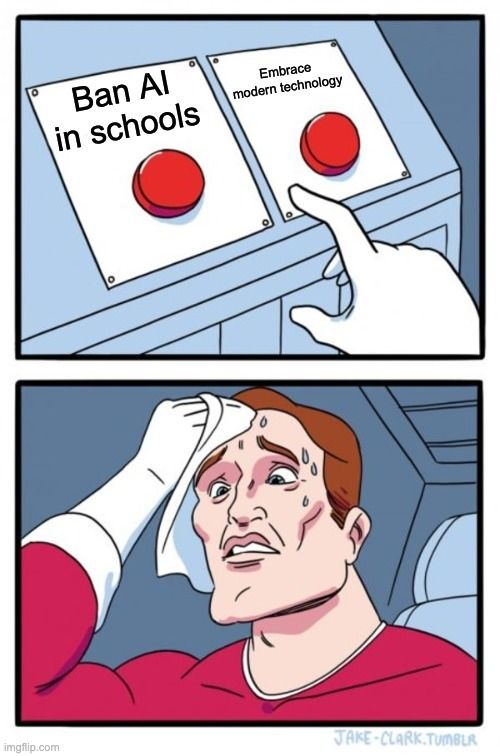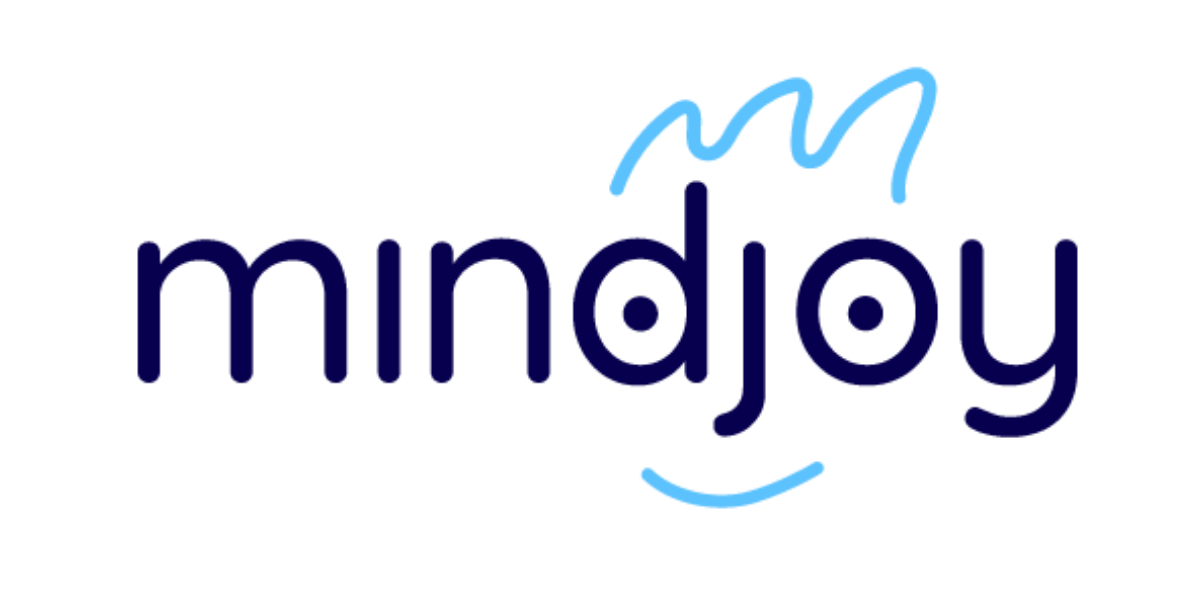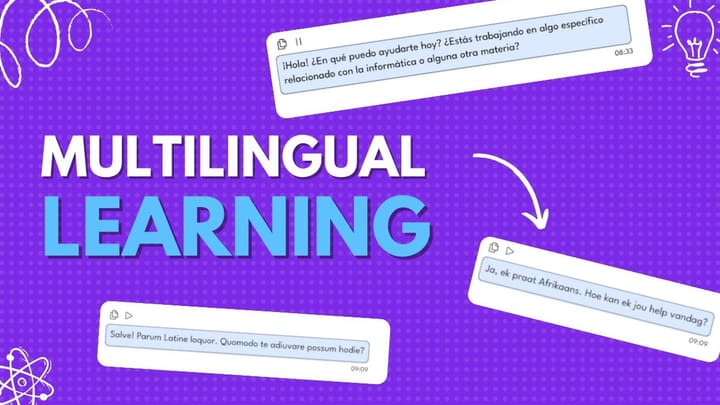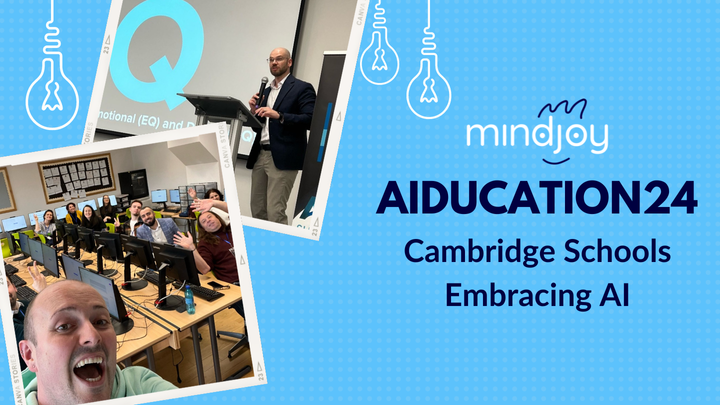The state of education: navigating a path to change

You can learn a lot about a school’s culture from the conversations in the staffroom.
Drop the word “AI” into a staffroom conversation and notice how the teachers respond. Do they shut down in fear and apocalyptic predictions, or do their eyes spark with curiosity?
The truth is that most teachers would LOVE an AI side-kick that can help them save time, support with classroom management and better engage learners. Teacher burnout is real. The problem is that technological innovation (particularly in AI) is disruptive and unpredictable - two things which seemingly work against the teacher’s need to ensure student safety while also meeting curriculum needs, parent demands and assessment standards.
As if teachers don’t already have enough to worry about👀 with the herculean task of educating the next generation (whose increasingly elusive attention span threatens even the most creative of lesson plans).
We’ve spoken to hundreds of teachers from around the world and we hear the same issues coming up, no matter the school’s background:
- Many teachers are experiencing overwhelming workloads as they juggle lesson planning, assessments, grading, and numerous other administrative tasks.
- The rapid integration of technology in classrooms requires educators to adapt and continuously update their digital skills but their time constraints already stretch their energy, creativity and patience.
- Limited resources, such as funding for materials and professional development, further strain the teaching profession and threatening to dampen teachers’ ability to deliver the quality education they know their students deserve.
- Moreover, the increasing reliance on standardized testing places pressure on educators to meet strict benchmarks, potentially stifling creativity and innovative teaching approaches.
The coming change 🌪🤖
Despite the frenzy of responsibilities already placed on teachers’ shoulders, the landscape of education is evolving and teachers are being presented with a critical moment of change.

The truth is, AI is set to disrupt our work and learning, even without further development. Its potential to significantly boost productivity and improve work tasks has been demonstrated in numerous controlled studies, meaning AI is already being deeply integrated into the work environment.
Disruption is inevitable, but the way we integrate this technology is up to us. As teachers, we not only have a responsibility to our learners to help prepare them for a future which is increasingly reliant on these technologies, but we have a chance to ask ourselves what kind of world we envision and desire, as we consider the implementation of AI in education. Here is the moment when we have to take the advice we give to our learners: be curious.
The Impact of AI in Education: Decisions and Outcomes 📚💡
As we consider the potential gains and losses associated with AI in education, it becomes critical to think about strategically harnessing its power. Personal tutoring and classroom learning can coexist with AI, and, at the same time, we must explore ways to utilize AI tools to alleviate teachers’ overwhelming workload.
We’ve seen that efforts to maximize the benefits of AI in education are currently fragmented (usually given to the school’s IT Head or a single teacher who is a tech evangelist). However, this kind of disruption necessitates a proactive approach from all departments to determine the most effective utilization of these tools for both educators and learners.
Educators also need to address the challenge of teaching the essential skills which might be hindered by the potential of learners using AI to “cheat”. For skills such as critical thinking and writing, teachers must explore alternative methods and adapt their teaching approaches. As we've said before, if a learner can answer your assessment questions with AI, you're asking the wrong questions.
Ultimately, the decisions made by education leaders in the coming months will shape the perception and adoption of AI in education, and we have the choice to pave the way for a future where AI can personalize learning for students of all backgrounds while potentially addressing long-standing inequities.
Where does one start?🧐🤷♀️
Implementing AI into your classrooms is a process (system-wide change at schools is complicated, we know). We recommend a phased approach, starting with showing educators how they can use AI to reduce their overwhelm.
Enter Mindjoy, your trusty AI companion ready to join forces with you. Think of us as the Robin to your Batman, Dr John Watson to your Sherlock, or the Chewbacca to your Hans Solo - we’ve developed an AI sidekick to help you overcome the obstacles that burden your quest to deliver exceptional educational experiences.
Imagine a world where the time-consuming task of creating engaging and meaningful projects becomes as effortless as the flick of a wand. Imagine a world all you need to do is upload an image of your existing content and set the desired parameters. In an instant, the AI tool conjures an exciting project that combines technology, hands-on experiences, and 21st-century skills. Seamlessly integrate technology into your lessons, save time on admin and transform your classroom to create captivating experiences that leave your students excited and engaged.
Sound too good to be true? Check it out 👇👇👇
Mindjoy's mission is clear—to empower you, the heroes of education, with the tools you need to reduce stress, combat burnout, and unlock the true potential of your students.
Join our waiting list here!



